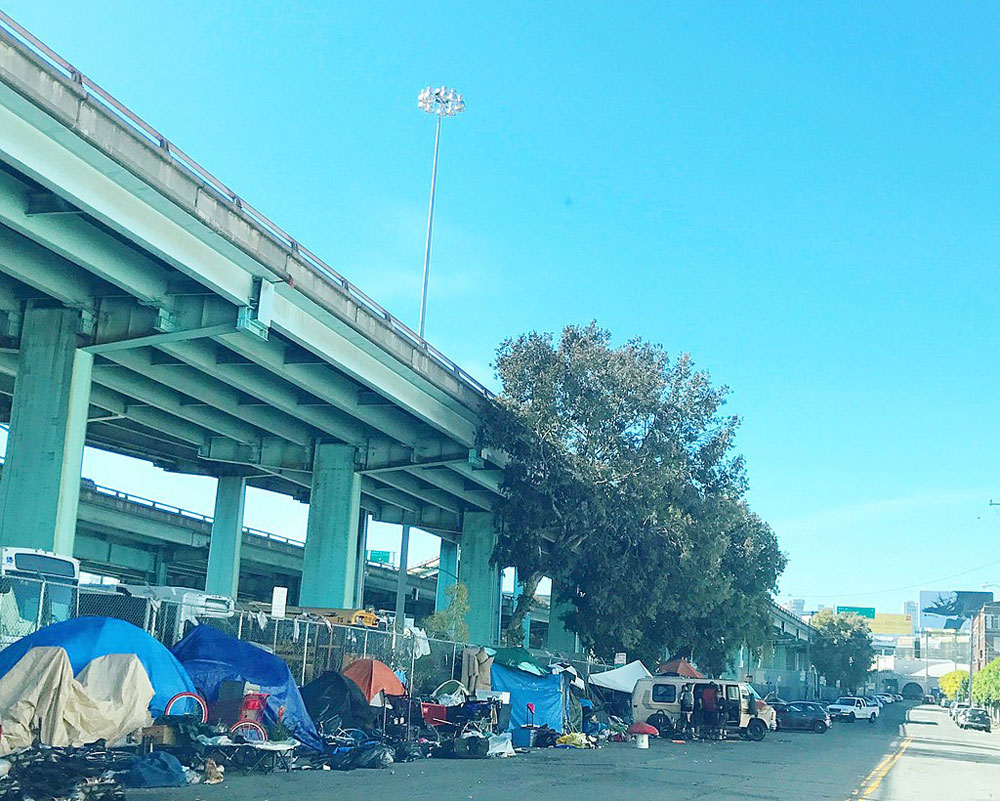
March 6, 2020; San Francisco Public Press
Last week, the city of San Francisco announced a sharp shift in its housing strategy. San Francisco is often lifted up as an extreme example of homelessness. In 2019, the city’s homeless count increased to 9,784 people—more than one percent of residents. Community advocates welcome the city’s policy shift because its previous strategy has been an abject failure. Critics argue it’s another example of policies that harm homeless people without addressing the causes of homelessness.
City officials in San Francisco decided to shift their strategy to quell the proliferation of tents in the streets. When the Healthy Streets Program launched in early 2018, it was intended to bring together government agencies to respond to a complaint-driven system, where residents could call a 311 hotline when they saw tents or a congregation of homeless people.
When the program was originally announced, the idea was for housing outreach workers and public health workers respond to citizen calls. But as SF Weekly reported, a vast majority of the 4,000 complaints were answered by Public Works employees and police, who were ill-equipped to respond productively. Homeless people claimed these interactions often ended with city workers throwing their possessions away.
The results speak for themselves. The San Francisco Public Press notes that 2019 saw fewer homeless people accepting referrals as a result of contacts, as well as an increase in the number of tents in public spaces. Not surprisingly, only two percent of police encounters resulted in referrals for homeless individuals, while 17 percent of encounters with the Homeless Outreach Team did. Another predictable outcome of these strategies was that a record number of people now report living in their vehicles—814 in all, a 41-percent increase from the previous count.
These developments in San Francisco take place as the national landscape is shifting. Robert Marbut Jr. was recently appointed to head the US Interagency Council on Homelessness (USICH), which “coordinates initiatives for people without housing across 19 different federal agencies.” This has caused major concern, as Marbut’s approaches threaten to increase, rather than decrease, homeless numbers.
Marbut believes homelessness can be solved by addressing the individual shortcomings of those experiencing homelessness. He continuously spouts unverified claims, like his assertion that 93 percent of dollars given to panhandlers are subsequently used for alcohol, drugs, or sex. CityLab explains that his strategy relies on a “policing-heavy model that emphasizes banning panhandling, centralizing services for the homeless in massive facilities far from urban centers, and providing food and shelter only as a reward for good behavior.”
Sign up for our free newsletters
Subscribe to NPQ's newsletters to have our top stories delivered directly to your inbox.
By signing up, you agree to our privacy policy and terms of use, and to receive messages from NPQ and our partners.
The new approach will be a dramatic shift in strategy, as USICH previously announced it would be prioritizing a “Housing First” model. The National Alliance to End Homelessness (NAEH) explains that Housing First is a people-centered approach that “prioritizes providing permanent housing to people experiencing homelessness, thus ending their homelessness and serving as a platform from which they can pursue personal goals and improve their quality of life.”
This approach is guided by the belief that people need basic necessities like food and a place to live before attending to anything less critical, such as getting a job, budgeting properly, or attending to substance use issues.
Advocates and those who work with the homeless population have been pushing a Housing First model for years. On the other hand, Marbut describes his approach as “Housing Fourth,” where individuals are essentially punished for things like drug and alcohol addiction, and only get services when they are able to clean up their act.
The NAEH report notes that many studies have confirmed the effectiveness of Housing First models. The Guardian reports that Finland doubled down on a Housing First model in 2008, and the “number of long-term homeless people in Finland has fallen by more than 35 percent.”
Whether San Francisco will follow through on shifting its strategy remains in doubt. Jennifer Friedenbach of the Coalition on Homelessness argues, “If our whole orientation switches away from, ‘we want to decrease the number of tents’ to ‘we want to help homeless people move into housing and get off the streets completely,’ that’s going to satisfy all the neighborhood in a real way.”
Cities across the nation continue to promote strategies that dehumanize and criminalize homeless people. We need strategies that are humane and recognize the systemic problems that continue to exacerbate homelessness, such as the fact the average rent for a one-bedroom apartment in San Francisco is $3,500 a month. Until we address the structural issues, people will continue to live on our streets, regardless of society’s judgments.—Benjamin Martinez













